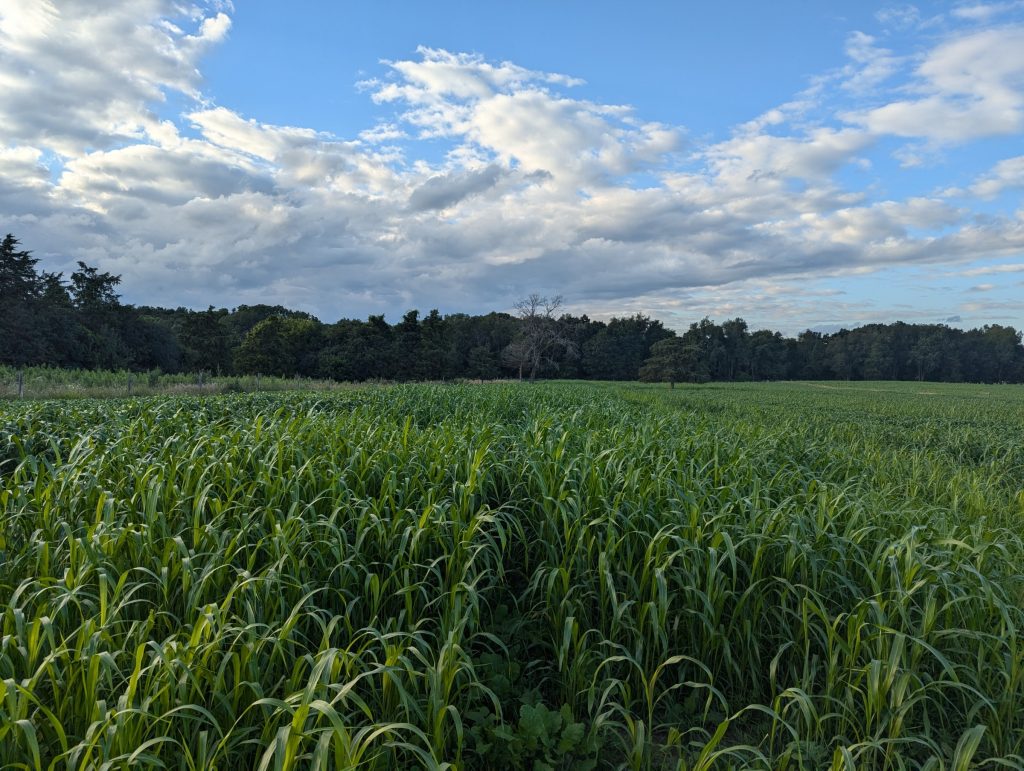
View weather and climate conditions this week in Wisconsin
Here are this week’s take home points about the weather, scroll down for the full report:
Current Conditions
- Early August has been cooler-than-normal for the majority of WI, particularly in the W/SW.
- Weekly precip totals were 0.5” for most locations in WI, with some scattered pockets of 2” or more.
Impact
•Soil moisture levels remain at ~80% adequate in the state, with no USDM drought categories in the state.
- Corn is at 63% good to excellent, over 84% silking, and has begun to dough in some fields.
- Soybeans are at 62% good to excellent, 88% blooming, and has begun to set pods (66% pod setting complete).
•GDDs are approaching 2200 (1600) units in the southern (northern) counties, running ahead of normal pace in the S & E.
Outlook
•Multiple rain chances across WI this next week, with a higher likelihood in the SE/SW & E.
•Temperatures leaning near normal heading into the first full week of August, with most in the state leaning towards below normal precip.
•The warmer-than-normal conditions have a higher probability to continue through August into early fall with a La Niña pattern taking shape.
What does this mean for you? Here are some things to consider for your farm this week:
Crop Development
•Scouting for crop stage and development of issues is very important this year as the wet spring means that there is a lot of variability in fields and across farms.
•As short season crops come off, consider diverse cover crop mixes to help mitigate any compaction that may have occurred this spring.
Manure Applications
•Runoff risk varies throughout the state in the next week. Be mindful of the possibility of runoff and plan manure applications accordingly. Check the DATCP runoff risk advisory forecast here.
•After wheat harvest there is an opportunity for manure and cover crops, see info here.
Pest Management
•Peak western bean cutworm flights have passed in the South. Sign up to receive text alerts when pests are in your region here.
•Japanese beetles have emerged, monitor for defoliation thresholds, see here for management information.
•Time to scout for soybean aphid, see more info here.
•Conditions have been right in many places for tar spot and white mold, information available here.
•Scout for corn rootworm beetle to determine pressure on next year’s continuous corn.
Forage Management
•Ensure wide swaths when mowing alfalfa to increase rate of drying and harvest sooner, reducing risk of rain damage.
•Avoid hay fire risks. Be aware of hay moisture and monitor stack temperature when putting up dry hay, consider wrapped bales.
•Look out for herbicide carryover, volunteers in late summer seeding of alfalfa after wheat. Read more.
•Corn Silage Harvest – look for local opportunities for stalk chopping to gauge moisture content, scout fields to understand which may be ready first. For varying planting dates, plan for a segregated, longer season harvest to optimize forage quality.




